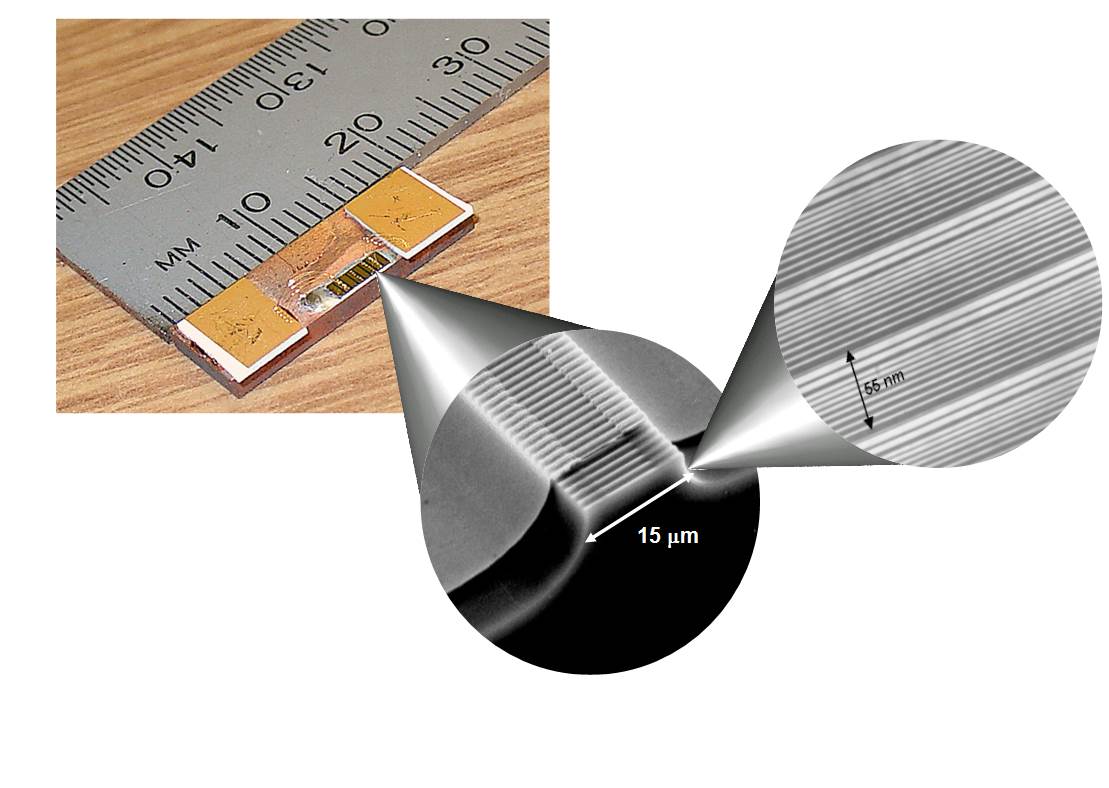Quantum cascade lasers

A quantum cascade laser is an infrared semiconductor laser in which electrons travel through a series of quantum wells and emit infrared light at wavelengths that depend on the precise dimensions of the wells
A QCL typically has hundreds of nanometer-size semiconductor layers that need to be assembled with exquisite accuracy. Molecular beam epitaxy (MBE) was first used to grow QCL structures and is still the technique of choice for the most demanding structures. MBE uses an ultra-high vacuum environment to deposit semiconductors one atomic layer at a time. More recently, metal-organic chemical vapor deposition has also been demonstrated to grow high-performance laser material. Both techniques allow the rigorous control of the layer thicknesses and reproducibility over the extended period of time necessary to grow full QCL structures.
